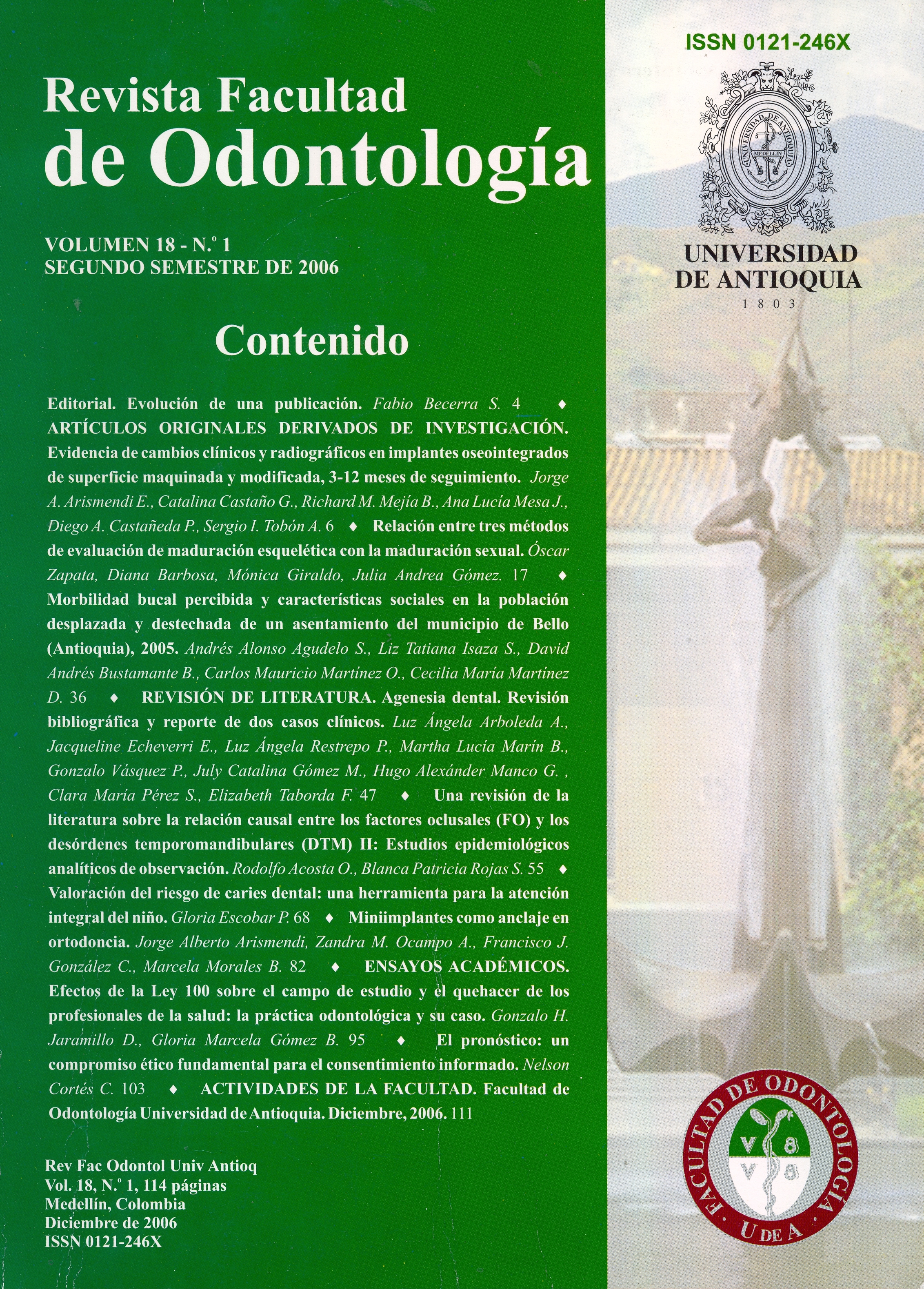Mini-implants as anchorage in orthodontics
DOI:
https://doi.org/10.17533/udea.rfo.2777Keywords:
Mini-implants, Anchorage control, Temporary anchorageAbstract
Control of anchorage is one of the most important factors for success during orthodontic treatment. Different mechanisms have been used in order to obtain this goal. They range from tooth structures to intraoral and extraoral oppliances. None of this methods provide optimum anchorage. In an attempt to overcome such limitations and obtain absolute anchorage, implants have been used. Among the different types of implants we find the osseointegrated implants, onplants, titanium mini plates and mini screws. Mini implants have been in use for the last two decades, during this period their use has notoriously increased due to their multiple advantages, such as, reduced size, low cost, easy insertion and removal, less invasive surgical technique, immediate loading ability, less chair time and clinical versatility. The purpose of this study is to integrate a general use of mini implants as orthodontic anchorage in different clinical applications referring to its origins, characteristics, indications, contraindications, safe sites for their insertion and some clinical cases.
Downloads
Downloads
Published
How to Cite
Issue
Section
License
Copyright Notice
Copyright comprises moral and patrimonial rights.
1. Moral rights: are born at the moment of the creation of the work, without the need to register it. They belong to the author in a personal and unrelinquishable manner; also, they are imprescriptible, unalienable and non negotiable. Moral rights are the right to paternity of the work, the right to integrity of the work, the right to maintain the work unedited or to publish it under a pseudonym or anonymously, the right to modify the work, the right to repent and, the right to be mentioned, in accordance with the definitions established in article 40 of Intellectual property bylaws of the Universidad (RECTORAL RESOLUTION 21231 of 2005).
2. Patrimonial rights: they consist of the capacity of financially dispose and benefit from the work trough any mean. Also, the patrimonial rights are relinquishable, attachable, prescriptive, temporary and transmissible, and they are caused with the publication or divulgation of the work. To the effect of publication of articles in the journal Revista de la Facultad de Odontología, it is understood that Universidad de Antioquia is the owner of the patrimonial rights of the contents of the publication.
The content of the publications is the exclusive responsibility of the authors. Neither the printing press, nor the editors, nor the Editorial Board will be responsible for the use of the information contained in the articles.
I, we, the author(s), and through me (us), the Entity for which I, am (are) working, hereby transfer in a total and definitive manner and without any limitation, to the Revista Facultad de Odontología Universidad de Antioquia, the patrimonial rights corresponding to the article presented for physical and digital publication. I also declare that neither this article, nor part of it has been published in another journal.
Open Access Policy
The articles published in our Journal are fully open access, as we consider that providing the public with free access to research contributes to a greater global exchange of knowledge.
Creative Commons License
The Journal offers its content to third parties without any kind of economic compensation or embargo on the articles. Articles are published under the terms of a Creative Commons license, known as Attribution – NonCommercial – Share Alike (BY-NC-SA), which permits use, distribution and reproduction in any medium, provided that the original work is properly cited and that the new productions are licensed under the same conditions.
![]()
This work is licensed under a Creative Commons Attribution-NonCommercial-ShareAlike 4.0 International License.













